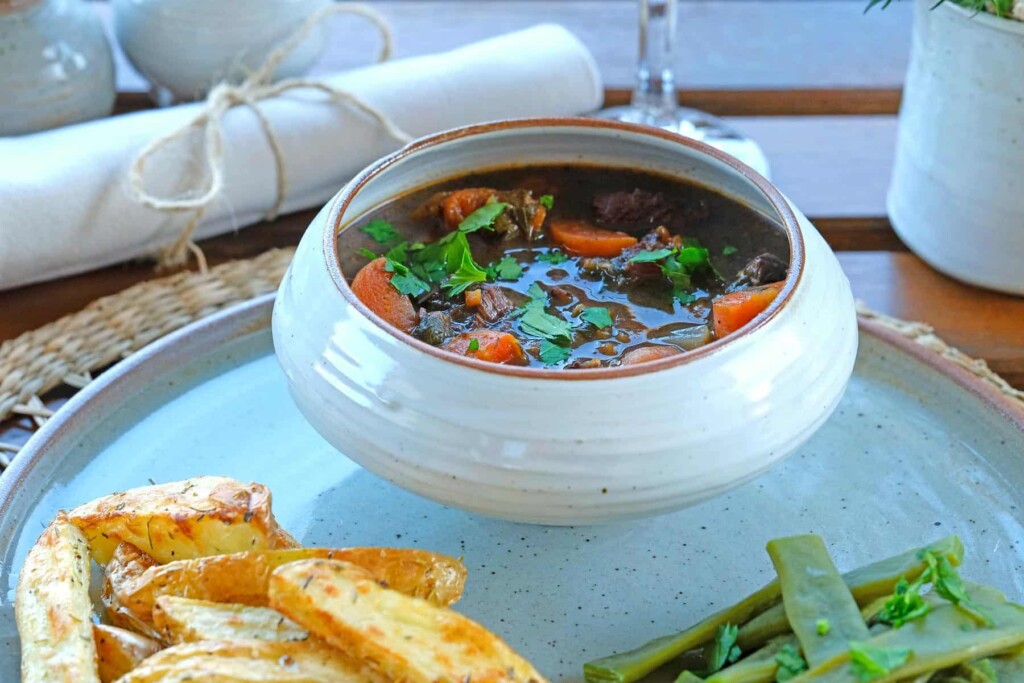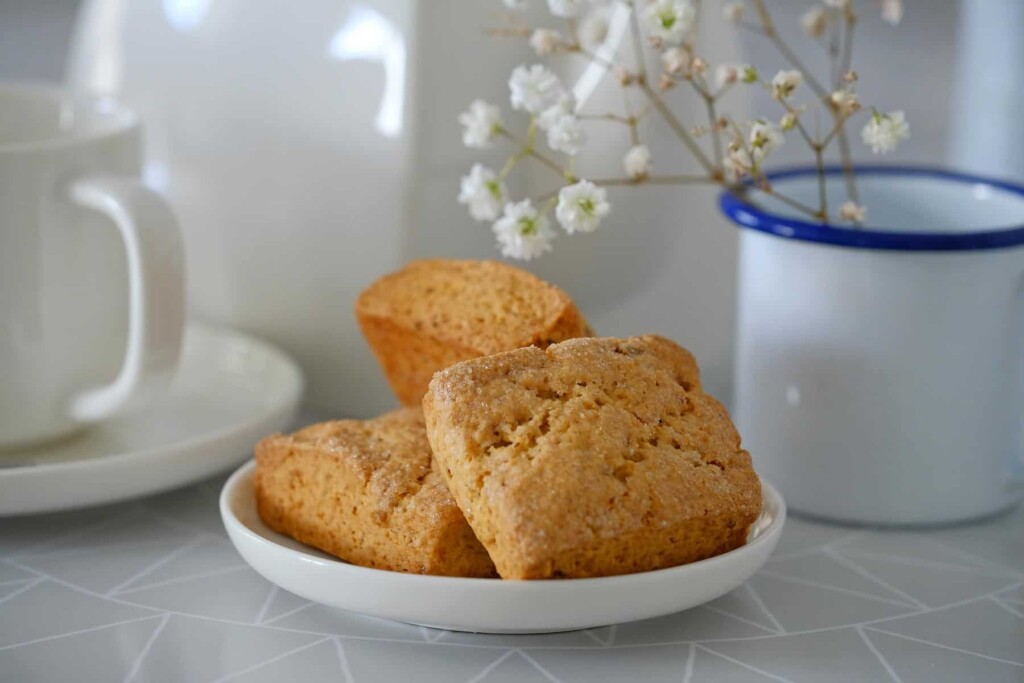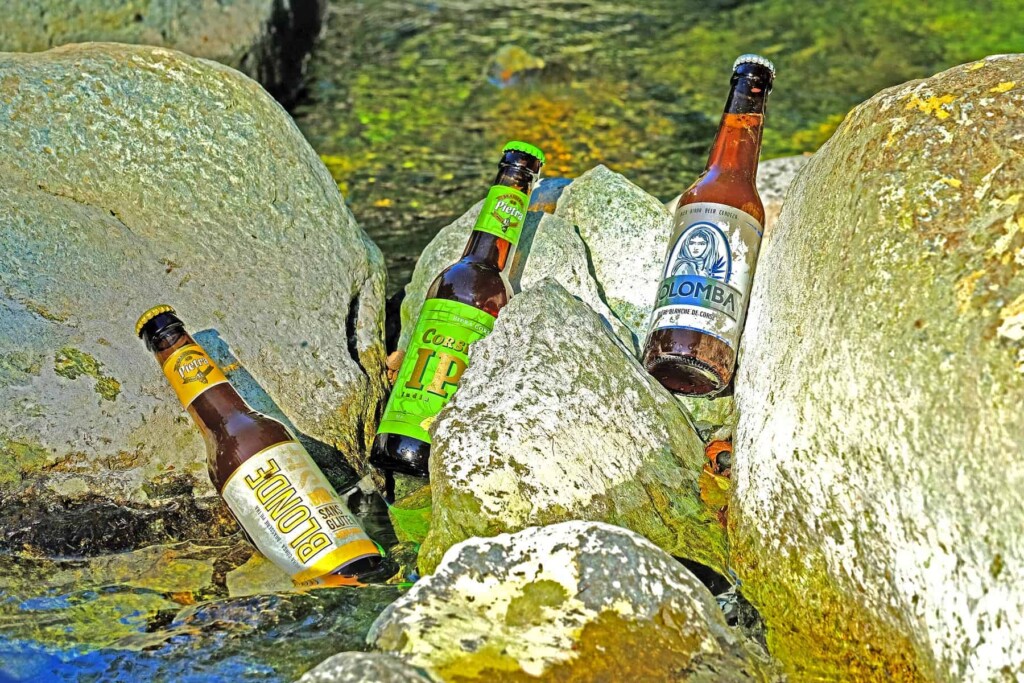
The uniqueness of Corsica’s cuisine stems from its heritage- authentic, rustic, and rich in culinary traditions. Based on a variety of local ingredients, it is inspired by strong French and Italian influences incorporating an irresistible devotion to hearty mountain cooking.
While savory game dishes, tender charcuterie, and tangy cheeses are a star of the island’s high-altitude interior menus, the coastal regions offer a lighter gastronomic style featuring Mediterranean vegetables, fresh seafood, and local fish.
Historically, the Corsican chestnut has played the most prominent culinary role in sustaining the islanders during the prolonged periods of famine now being part of numerous traditional recipes. Similarly, the local olive oil, excellent wines, and aromatic, top-quality honey belong to some of Corsica’s most prized specialties.
Continue reading to discover the highlights of the island’s diverse gastronomic heritage.
This page contains affiliate links meaning I get a commission if you decide to make a purchase through my links, at no extra cost to you. Click here to learn more.

BRIEF HISTORY OF CORSICAN GASTRONOMY
Corsican cuisine has been inevitably shaped by its geographic constraints and diverse cultural influences. Closely related to the island’s fascinating history, the culinary traditions evolved along with the changing architecture of local events.
Before descending to populate the previously malaria-ridden coastal areas, Corsicans inhabited the rugged mountainous interior. Experienced in the pastoral way of life, they relied on sheep as their primary livestock raised for meat, milk, and skins. Apiculture was another popular activity providing the islanders with aromatic honey whereas widely produced local wines were exported to Rome.
Given the tough high-altitude climatic conditions, early culinary traditions of the island drew on dense, earthy ingredients efficacious to successfully sustain autochthonic communities.
The subsequent Tuscan and Genoese rule of Corsica throughout the Middle Ages brought along strong Italian influences. A decree issued by a Genoese governor in 1548 obliged every landowner to plant a chestnut, olive, fig, and mulberry tree each year. In the following decades, the Corsican diet integrated the abounding new ingredients introducing a unique gastronomic landscape. As a result, the cereals were almost exclusively replaced by chestnut preserving the islanders from the ravaging famines.
Resistant chestnut forests also managed to withstand the aggression of the French army who, after the annexation in 1768, attempted to deprive the combative rebels of their food source. Efforts to cut out the trees eventually failed and the chestnut triumphed as the building block of regional gastronomy.
Today, Corsica serves as an exciting culinary destination able to satisfy even the most demanding palates. The unmatched diversity of traditional specialties accompanied by the increasing demand for healthy, top-quality produce continue to strengthen the local gastronomic identity.

26 CORSICAN MUST-TRY SPECIALTIES
- Civet de Sanglier (M) – wild boar casserole usually served with pasta or polenta. This signature Corsican dish is made from top-quality meat cooked overnight with onions, carrots, garlic, chestnuts, and wine. Hearty and rich, the traditional wild boar stew is best accompanied by a glass of Patrimonio red.
- Veau aux Olives (M) – veal with olives, a very popular Corsican dish slow-cooked along with onions, tomatoes, and herbs. In Corsica, veal calves are raised in their natural environment feeding on aromatic shrubs of the maquis. A known staple in local cooking, this tender stew is typically served over pasta.
- Agneau Corse (M) – Corsican lamb stew, a hallmark dish of local cooking slow-roasted with fragrant rosemary, garlic, and potatoes. Free-range lamb reared in Corsica originates from old insular breeds farmed according to the best ancestral traditions.
- Cabri Rōti Corse (M) – tender Corsican goat roasted with rosemary, myrtle, and garlic. An emblematic local dish served during the Christmas/New Year season but also throughout the year in Auberges in the mountains. The quality and authenticity of this exquisite dish have been recognized by the PGI (Protected Geographical Indication) status granted for excellence in food.
- Charcuterie Corse (M) – Corsican cured meats, famous for their exceptional quality and flavous. Sourced from free-range local pork raised in the mountains, fed with a diet of chestnuts and acorns. Generations of Corsican craftsmen elevated the pig-rearing tradition to an art form providing some of the best cold cuts in the Mediterranean.
- Fromage Corse (V) – Corsican cheeses, the island’s emblematic ingredient indispensable in local gastronomy. Produced for centuries by Corsican shepherds, it is principally made of sheep and goat’s milk. Granted an official AOP status for its supreme quality, the cheese varies in texture and flavour. Brocciu is undoubtedly the most popular out of the 6 types available, used in a variety of traditional recipes. A must-try when visiting the island.
- Soupe Corse (M/V) – traditional peasant soup, a classic dish that originated in the Corsican mountains. This hearty, dense soup is rich in vegetables and requires slow cooking. Chickpeas, dried beans, cabbage, onions, potatoes, and garlic are simmered gently over low heat. Ham or thin slices of figatellu may be added for flavor.
- Pulenta (V) – polenta based on chestnut flour. The art of preparing this emblematic dish has been passed on from generations of Corsicans. This uniquely-flavoured delicacy is mainly served with a piece of fresh brocciu, grilled figatellu, scrambled eggs, or honey. Exceptionally diverse, the Corsican polenta has become an integral part of the island’s gastronomic heritage.
- Cannelloni au Brocciu (V) – pasta stuffed with creamy brocciu cheese, Swiss chard, garlic, and mint. One of the most popular Corsican dishes served widely in local restaurants. Corsican comfort food at its finest.
- Migliacci (V) – wheat flour pancakes filled with fresh sheep of goat’s cheese, a delicious savoury specialty originating from northern Corsica. Served hot or cold in local patisseries, Migliacci make ideal picnic food.
- Beignets au Brocciu (V) – Corsican donuts with brocciu, enjoyed as a savoury snack or a sweet dessert the beignets proudly feature on virtually all restaurants menus.
- Omlette á la Menthe (V) – an omelet with fresh brocciu and aromatic mint leaves- classic Corsican flavours mixed together to create a deliciously simple dish appropriate to taste on any occasion. In April, mint may be swapped for tender wild asparagus springing out from rain-imbued meadows.
- Aubergines à la Bonifacienne (V) – aubergines stuffed with cheese, garlic, basil, breadcrumbs, eggs, and milk. A traditional Corsican dish from the Bonifacio region that may be served with homemade tomato sauce and a salad. Healthy and light, this vegetarian dish is a very popular lunch choice in summer.
- Aziminu (F) – a rich Corsican fish soup reminiscent of bouillabaisse. This intensely spiced, garlicky stew is made from various local rockfish such as mullet, sea bream, chapon, or turbot. It marries perfectly with a glass of chilled Sartène rose.
- Truite Farcie au Brocciu (F) – trout stuffed with brocciu, parsley, and mint. The Corsican trout is a freshwater species present in various types of waterways including lakes. The pure, cold water of the mountain streams cascading down in lively torrents provides excellent conditions for this demanding fish.
- Rascasse au Four (F) – baked scorpionfish, cooked on a bed of fennel and rosemary with new potatoes and a selection of vegetables, a sophisticated delicacy served in top Corsican restaurants. The firm, delicate flesh, and its pure flavour allow this unique fish to shine when accompanied by a chilled glass of local Vermentino.
- Canistrelli (D) – dry shortbread biscuits often made from chestnut flour and white wine. Traditional shepherd’s snack with its origins dating back to Middle Ages. Canistelli come in different flavours, from hazelnut or peanut to chocolate chip and almond, making for a lovely souvenir from Corsica.
- Frappes (D) – sweet Corsican fritters, that perfectly complement hot tea or coffee. Crispy on the outside, fluffy, and delicate on the inside, frappes may be flavoured with orange, lemon, or pastis. Incredibly addictive, they always quickly disappear from the table.
- Fiadone (D) – Corsican-style cheesecake made of brocciu, eggs, sugar, and lemon zest. Fiadone is the unquestionable king of Corsican desserts, mainly eaten in winter since it is made of brocciu. Fresh, moist, and simple, it is easy to make but will satisfy even the most demanding palates.
- Gâteau à la Farine de Châtaigne (D) – soft cake made of chestnut flour. Chestnut, the star ingredient, gives this classic Corsican pastry characteristic sweet flavours and light texture. This mouth-watering dessert may be accompanied by a scoop of vanilla ice cream or fromage frais.
- Miel de Corse – Corsican honey, an outstanding-quality local specialty recognized by the AOC (Appellation d’Origine Controlée) label. There are 6 different honey varieties within the appellation reflecting perfectly their floral origins. Produced according to ancient bee-keeping traditions the Corsican golden nectar is a must-try when visiting the island.
- Confitures Corses – Corsican jams. Sun–soaked juicy Corsican fruits make delectable jams and condiments. Chestnut, fig, clementine, or lemon harvested from the best, often organic local orchards produce succulent gourmet delicacy reflecting the island’s botanic diversity. An excellent product to take home to enjoy outside of the summer season as a reminder of the Mediterranean bliss.
- Huile d’Olive de Corse – Corsican olive oil, the fundamental element of the Corsican diet, recognized internationally for its unique, elegant aromas of dried fruit, nuts, and the maquis. As an integral part of the island’s history, cultural heritage, and economy, the olive tree has become one of the most precious plants symbolizing prosperity. The AOP label guarantees the superior quality of this exquisite liquid.
- Bière Corse – Corsican beer, an excellent artisanal product known internationally for its unique flavours perfectly translating the island’s distinct terroirs. The famous Pietra lager made from top-quality chestnut flour has become Corsica’s emblematic produce, however, there are numerous local breweries offering their hand-crafted drink to thirsty visitors.
- Liqueurs Corses – Corsican liqueurs and digestives. It is a Corsican tradition to finish a meal with a glass of local liqueur. Made from indigenous fruit such as myrtle, lemon, arbutus, or chestnut, this creamy, often homemade drink, has become a symbol of Corsican hospitality.
- Vin Corse – Corsican wines. With a longstanding winemaking tradition going back centuries, Corsica is an exciting oeno-destination. Local wines are often made with indigenous grape varieties offering fascinating organoleptic experiences perfectly complementing the insular gastronomy. There are 9 appellations within the territory with the Patrimonio AOP being the oldest. Varieties to try are Vermentino for the white, Nielluccio, Sciacciarello, or Carcaghjolu Neru for the red, and Muscat Petit Grain for the most delicious sweet wine. With 6200 h of vines planted on the island wine lovers are sure to discover something they’ll love.
( M – Meat, V – Vegetarian, F – Fish/Seafood, D – Dessert )
ENJOY A CULINARY TOUR IN AJACCIO
Taste mouthwatering Corsican specialties during an exciting culinary tour of Ajaccio, Corsica’s capital city. A local guide will introduce you to artisanal products and dishes away from the tourist traps. Tastings last for up to 3 hours and vegetarians are welcome. Learn more about this gourmet adventure and book your tour here.

IS VEGETARIAN FOOD AVAILABLE IN CORSICA?
While Corsican cuisine might be primarily known for charcuterie and wild boar dishes, it also features a wide variety of delicious vegetarian specialties. Traditional vegetarian recipes are based on ingredients readily available on the island.
Fresh, sun-drenched vegetables and juicy fruits are easily accessible from the local farmers who pride themselves on being able to provide organic, nutrient-dense produce. Passionate about their food, Corsicans take seriously biodiversity, soil health, and water conservation making sure that only nature’s finest ingredients make it to the dinner table.
Diary is also widely consumed on the island. Famous Corsican cheeses are principally made from sheep or goat’s milk with brocciu claiming unequivocally the cream of the crop position. As a very versatile ingredient, cheese is used in a variety of dishes, from savoury pasta to succulent desserts. Eaten on its own on top of a crispy baguette it makes a perfect picnic snack.
Besides the traditional Corsican vegetarian dishes, most restaurants serve classic meatless pizzas, pasta, and soups. If you fancy a vegetarian version of a particular dish, do not hesitate to ask the hosts, Corsicans are very welcoming and if possible, they will do their best to accommodate your request.

15 STAPLE VEGETARIAN DISHES TO TRY IN CORSICA
- Artichauts Farcis au Brocciu (V) – artichokes stuffed with brocciu, a tasty light starter served hot, with mint and garlic added for flavour. Before ordering make sure you have chosen the vegetarian version of the dish as the recipe may also include slices of the Corsican panzetta.
- Omelette aux Asperges Sauvages (V) – an omelet with wild asparagus, a must-try dish if you happen to visit Corsica in spring. Otherwise, look out for a traditional version of this feel-good food served with mint or mushrooms.
- Soupe de Poisons (F) – fish soup with a Corsican twist of added pastis and fennel. This classic spicy stew is made with rockfish and served with grated cheese. Delicious garlicky rouille is perfect for spreading on crusty bread.
- Lasagnes de Légumes au Brocciu (V) – lasagne with Mediterranean vegetables and brocciu, a meatless interpretation of the traditional pasta dish with distinct Corsican flavours, perfect for summer evenings.
- Salade de Poulpes (F) – octopus salad with lemon and garlic, a light delight for lovers of seafood, usually served with grilled peppers and onions.
- Rougets grillés (F) – grilled red mullet with thyme and fennel, easy and quick to prepare, its robust flavour and juicy flesh pair best with crispy Corsican rosé.
- Tarte au Brocciu (V) – savoury tart with brocciu and mint, made from homemade shortcrust pastry, eggs, cream, and the king of Corsican cheeses. This fluffy vegetarian quiche is a perfect versatile meal for a light lunch or an afternoon snack.
- Daurade au Miel (F) – baked seabream glazed with honey. Delicate flavours of this popular fish marry perfectly with aromatic notes of the exquisite Corsican honey, a superb evening treat typically served with slices of potatoes and ripe tomatoes.
- Pates aux Langoustes (F) – traditional lobster pasta. The best place to taste this staple dish is Centuri, a small fishing port in Cap Corse famous for outstanding seafood restaurants.
- Moules Farcies (F) – mussels stuffed with cheese, a known Corsican delicacy offered in restaurants as a starter. Tasty mussel stuffing is made of cheese, eggs, garlic mint, and shallots. Shellfish may be sautéed or cooked under the grill in the oven.
- Risotto de Fenouil au Miel de Maquis (V) – risotto with fennel and honey from the maquis, creamy, delicate, and aromatic, this wonderful rice dish perfectly showcases classic flavours of the Corsican cuisine. A glass of the local Vermentino complements the meal.
- Pizza Corse Végétarienne (V) – a meatless Corsican pizza, a proposition consistently present on restaurant menus, you may choose from a selection of vegetable and seafood toppings, often accompanied by the local sheep or goat’s cheese.
- Tapenade (V) – olives, capers, and anchovies purée, originally from Marseille, it is very popular as a dip or spread in Corsica. Made from top-quality local ingredients, tapenade has become an artisanal product indispensable on the appetizer platter.
- Pastizzu (D) – Corsican flan with chestnut flour, a velvety dessert with subtle vanilla and chestnut flavours, often drizzled with local honey. An indispensable dish at the family Sunday meal.
- Nougat Corse (D) – Corsican nougat. Perfect for a sweet break, this delicious treat comes in a variety of flavours- chestnut, fig, clementine, citron. However, it is its main ingredient, the AOC Corsican honey that assures delectable fragrant aromas.
( V- Vegetarian, F – Fish/Seafood, D – Dessert )
The above list of dishes supplements the collection of traditional vegetarian specialties of Corsican cuisine mentioned in the previous paragraph.
ENJOY A CULINARY EXPERIENCE AT THE NAPOLEON CAVE IN AJACCIO
Enjoy a Corsican meal while learning fascinating facts about the life of Napoleon Bonaparte at the Napoleon Cave. This comprehensive cultural experience may be booked in advance.

WHAT DO THE CORSICANS EAT FOR BREAKFAST?
Your typical Corsican breakfast served in a bar or a café will comprise a pastry of choice, a glass of fruit juice, and coffee. Petit déjouner complet additionally incorporates a freshly baked baguette, butter, and a selection of jams. Prices vary depending on the location but you may expect to pay around 6 – 12 euros per person.
In hotels, you will be often treated to a proper Corsican breakfast bound to awaken your taste buds. A variety of products sourced from local suppliers include Corsican cheese, charcuterie, free-range eggs, homemade jams, honey, and pastries. Fresh, seasonal fruit provided by insular farmers accompany every Corsican meal including breakfast whereas a cup of strong, pick-me-up coffee inevitably concludes this delicious feast. Rates reflect the classification of the hotel’s standard.

CAN YOU DRINK TAP WATER IN CORSICA?
Unless specified differently by ARS (Regional Health Agency) or the local head of distribution, tap water is safe to drink in Corsica. In France, water supplied to communities for consumption is subject to strict monitoring by the health authorities with 18.5 million analyses carried out each year. Being the most controlled food in the country, tap water must meet the chemical, bacteriologic, and organoleptic quality norms set by the World Health Organization and reinforced by the authorities in the European Union.
Corsica as a region has nearly 650 drinking water distribution networks with almost 4000 controls performed every year.
The Ministry of Health provides direct access to the results of health checks carried out by the Regional Health Agencies with the possibility to verify the current status of tap water for every French commune. The following link will enable you to get the most recent water quality information for your preferred Corsican destination: https://sante.gouv.fr/sante-et-environnement/eaux/eau.
The Corsican ARS site: https://www.corse.ars.sante.fr/surveillance-de-la-qualite-des-eaux also publishes up-to-date guidance on drinking, non-drinking, and bathing water quality.
As a rule of thumb, follow these simple steps to make sure that you optimize your access to tap water In Corsica:
- After a prolonged period of absence, let the water run for a minute or two to release the stagnated liquid from the pipes.
- For drinking or food preparation use water from the cold water network. Hot water encourages the transfer of metals comprising the pipes thus deteriorating the water quality.
- If you find that water has a strong chlorine taste, leave it in the refrigerator in an open jug for a few hours to eliminate the aromas.

CORSICAN MINERAL WATER
Corsica abounds in pure, excellent-quality mineral waters containing high amounts of health-promoting natural microelements. The famous Orezza comes from the region of Castagnicca, the Zilia has its source in Balagne near Monte Grosso whereas the St-George springs in the south of the island at the foot of Monte Serra-Cimaggia.
Just as in the Roman times, this crystalline, rich in minerals, pure liquid quenches the thirst of the islanders throughout the hot summer months. Bottled in either glass or plastic, the water is widely sold in local supermarkets, bars, and restaurants.
It is worth noting that numerous Corsican communes have free access to microbiologically safe freshwater sources of supreme quality. With the multitude of water points, reusable water filter bottles or straws come in very handy on Corsican trails where hydration is paramount. However, if a roadside source of a fontaine carries a sign Non Potable, do not use the water for consumption as it is unsafe to drink.
HELPFUL TRAVEL RESOURCES :
Please help support CoolCorsica!
If you find this website as useful as a guidebook you may have had to buy to plan your adventures, please consider helping me with a small donation.
This all-content traveler-focused site is created in my spare time with a desire to share comprehensive information, useful tips, and inspiring photos of Corsica’s most scenic locations.
Please note that certain products/services and links to products/services are affiliate links and I may earn a commission for any purchases that you make, at no additional cost to you. I truly appreciate your use of any of the links I share.
With your generous help, I can continue to offer my advice and support in planning your dream holiday.
Thank you for your contribution!
